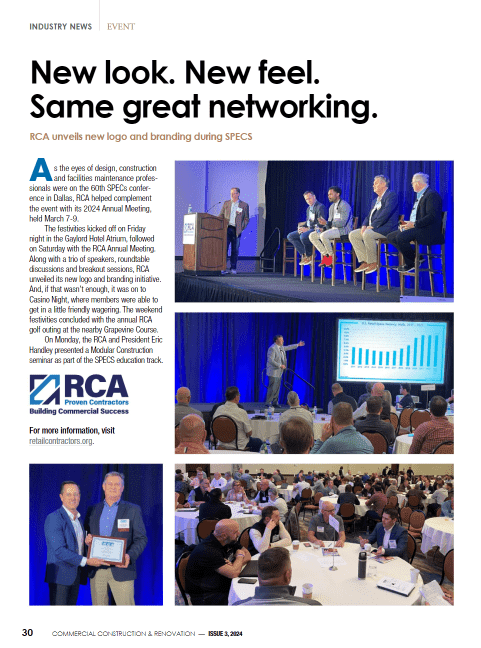Close your eyes and imagine you’re the manager of a professional baseball team, it’s Game 7, bottom of the ninth, two outs, your team is up 3-2 with the tying run on third base, and the winning run on first base. Batter hits a fly ball to the gap in right centerfield, and the base runners go on contact. The center fielder starts to sprint… if he catches it – game over; if he plays it on one hop – the score is tied with the winning run in scoring position. The center fielder dives at full speed, lands on the ground as the ball just skips over his glove… the 3rd base runner ties the score as the ball continues to roll all the way to the warning track allowing the 1st base runner to score – the game is over and you lost.
Now, as the manager of the team, what is your reaction? Do you “back” your fielder and compliment him on making a rational decision? Or, do you hold him “accountable”, by laying blame and berating the player for making a bad choice?
Your choice will have consequences: Berate him – you may stop him from making that choice again, however, from this day forward will he play it “too safe”? Compliment him – as it could have very well been the right call with a little luck, however, does it embolden him to make riskier decisions?
Or do you take time and look at the complete picture or situation? Did the fielder give it everything he had, or did he drift/delay and then decide to dive? If he didn’t loaf, then the accountability or lack of accountability would be centered on: One, where was the right fielder and why wasn’t he backing up his teammate in order to prevent the winning run? Two, how about the managers and coaches, and do they need to be held accountable? Have they gone over situations like this with the players? If not, why?
Accountability in the business world should not just be top down; everyone must know they are being held accountable for their actions. But whereas dropping a ball might lose a game, not being accountable on the job can result in an employee losing a finger, a hand, or a life. Not being accountable on the job can result in losing employees as they walk out the door as your better employees become frustrated by others that spend too much time socializing or not following procedures which makes things difficult for others.
But what exactly does accountability mean? A recent visit to an employer brought this question to the forefront. The owner boasted that they have a “culture of accountability”, but later complained about employee turnover and not finding employees that can “actually work”.
When I asked the question, “what do you mean by accountability?”, he responded that “we hold employee’s feet to the fire to make sure they are doing what they are supposed to do at all times”. But yet, this employer has an OSHA recordable injury rate slightly more than twice their industry average. They can’t seem to keep new employees, and have even lost a few long term employees as well.
In a recent survey, 552 employers were asked the question: “How confident are you that you have a plan to manage the performance of your employees?” The results weren’t pretty. The overwhelming response was that a staggering 45.5% said they pretty much had no plan (and came up just short of admitting they were making it up on the fly). Only 28% were confident or very confident that they had a plan to measure and manage performance.
So, with no clear plan, how do you measure and monitor, or even define accountability?
Accountability should be a two-way street:
- Employees need to know what their actions and reactions are at all times, and to forget either one can cause a problem. The action of making sure a valve has a lock-out tag on it is just as vitally important as what their reaction will be when a co-worker is injured when the tag is not used. Will they do what they are supposed to do? Do they even know what they are supposed to do? In other words, do you have a playbook for your employees much like a sports team has for its players? And to you routinely practice it? Your employees need to know their roles, goals, initiatives, etc. and they need to be achievable, trackable and measurable.
- Management needs to make sure that the employee has a deep understanding of the job required as well as the tools, skills, knowledge, training, and time necessary to complete the tasks at hand. The latter is where most employers are falling short leading to frustrated employees walking out the door. Remember, depending upon the poll, pay is only the 5th-7thleading reason why an employee leaves an employer, everything above pay has to do with their experience and engagement with their employer!
Having well-trained employees, or at the very least being susceptible to being well-trained, starts with the process of hiring the right employees in the first place. Sadly, this is a task that seems to have become seriously diluted as the hiring pool continues to shrink and HR departments find themselves picking from the low-hanging fruit, or worse, the discarded fruit laying on the ground.
In the same poll we eluded to earlier, 552 employers were asked the question: “How confident are you that you have a process in place designed to prevent hiring a future personnel problem?” And the result is a little disconcerting. A staggering 46.2% said they have no confidence they weren’t hiring the wrong person. Of the respondents, 15.4% said they were confident (the remainder said they were either a “little” or “somewhat” confident). This means if 100 workers were hired, close to 85 of these new employees were already being viewed as potential problems. That’s a sobering thought, and one that makes management’s job even more difficult from a training viewpoint. But if those employees are not trained well, especially when it comes to making them accountable, problems can arise, such as:
- Employees aren’t sure if they are doing a good job or a bad job as they have no way to measure their performance.
- Employees feeling they were never given the tools and training to succeed.
- Employees feel that without a way to gauge their performance they have no opportunity for advancement or bonuses.
- Employees begin to think that management feels they are not worth investing in.
There should be an analysis of why it is failing. When the analysis is finished, a plan can be created to help the employee obtain the skills and knowledge needed, make sure they have the tools and training necessary, and that they have appropriate time to complete the tasks.
Management not understanding the time truly necessary to complete a task can have devastating results. The leading reason why employees make mistakes, upset customers, damage products, or are seriously injured or killed, is because they are rushing through a task due to time performance pressure.
Captain Michael Abrashoff, who took the worst ship in the Navy to become one of the best, demonstrated this point perfectly in his book, It’s Your Ship: Management Techniques from the Best Damn Ship in the Navy. When he was XO of another ship, his failure to understand the time necessary to complete a task lead him to possibly court-martial a sailor for falling asleep while on watch duty. It was his order to have a room reorganized, passed down through an unquestioning command, that lead a sailor to have to work his full shift, stay up all night to physically reorganize the room, and then return to watch duty. It was Abrashoff’s and the ship management oversight that led to this unsafe situation both in terms of safety to the individual sailor (employee) as well as to the safety of the entire ship and all the souls aboard, including himself.
No matter how you look at it, establishing accountability starts with the owners, executives, management and supervisors looking in the mirror to make sure they realize that if an employee is “failing”, then they may have failed the employee first.
David R. Leng, CPCU, CIC, CBWA, CRM, CWCA, is author of “The 10 Laws of Insurance Attraction,” ”Turning Premiums Into Profits,” and “Stop Being Frustrated & Overcharged.” He is executive vice president of the Duncan Financial Group in Irwin, Pa., as well as an instructor for the Institute of WorkComp Professionals (IWCP) and can be contacted at david@davidleng.com.






 The 2024 virtual Men’s Round Table will be held Q4, 2024, date TBD.
The 2024 virtual Men’s Round Table will be held Q4, 2024, date TBD.











